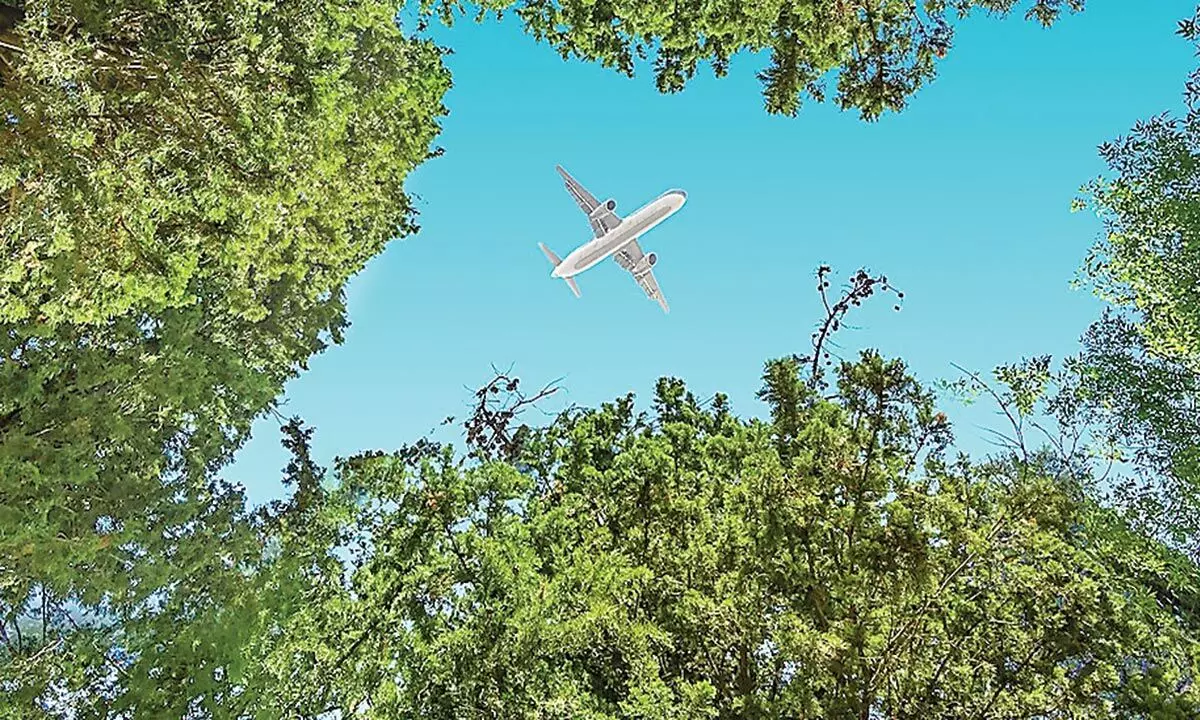Why ICAO Assembly must devise ways to decarbonize aviation
The sector is facing several barriers to decarbonization, including the lack of regulatory support
image for illustrative purpose

Data from a recent IATA survey shows that improving the environmental impact of airlines is seen as a post-pandemic priority for passengers, with 73 per cent of people polled wanting the aviation industry to focus on reducing its climate impact as it emerges from the Covid crisis
The International Air Transport Association (IATA) called for governments to adopt a long term aspirational goal to decarbonize aviation at the 41st Assembly of the International Civil Aviation Organization (ICAO) later this year.
The call came at the 78th IATA Annual General Meeting (AGM) and World Air Transport Summit (WATS) where airlines are mapping out the pathway to the industry's commitment to achieving net-zero emissions by 2050 in line with the Paris Agreement's 1.5°C goals.
"The decarbonization of the global economy will require investment across countries and across decades, particularly in the transition away from fossil fuels. Stability of policy matters. At the IATA AGM in October 2021, IATA member airlines took the monumental decision to commit to achieving net zero emissions by 2050. As we move from commitment to action, it is critical that the industry is supported by governments with policies that are focused on the same decarbonization goal," said Willie Walsh, IATA's Director-General.
"Achieving net-zero emissions will be a huge challenge. The projected scale of the industry in 2050 will require the mitigation of 1.8 gigatons of carbon. Achieving that will require investments across the value chain running into the trillions of dollars. Investment at that magnitude must be supported by globally consistent government policies that help deliver the decarbonization ambition, taking into account differing levels of development, and do not distort competition," said Walsh.
I am optimistic that governments will support the industry's ambition with an agreement on a Long Term Aspirational Goal at the upcoming ICAO Assembly. People want to see aviation decarbonize. They expect the industry and governments to be working together. The industry's determination to achieve net zero by 2050 is firm. How would governments explain the failure to reach an agreement to their citizens? said Walsh.
Data from a recent IATA survey shows that improving the environmental impact of airlines is seen as a post-pandemic priority for passengers, with 73 per cent of people polled wanting the aviation industry to focus on reducing its climate impact as it emerges from the Covid crisis. Two-thirds of people polled also believe that taxing the industry will not achieve net-zero faster and expressed concern about the money raised not being earmarked for decarbonization projects.
Aviation has often been considered a sector that will decarbonize later than others, because of the complexity involved and the view that aviation accounts for 'just 3 per cent of global emissions'. But there is a need to act now.
The sector is facing several barriers to decarbonization − the reluctance of passengers to accept the cost of low-emission solutions, lack of regulatory support, prohibitively high cost of SAF, and concerns about quality, transparency, and communications.
Collaboration with other sectors is essential to the successful deployment of SAF. It can drive down the cost of required technologies, such as hydrogen production, direct air capture, and biomass conversion, and ensure effective use of scarce resources.
The pathway to decarbonization needs to be more ambitious and investments need to start sooner to address societal expectations, reach sufficient SAF volumes and bring down costs to the levels required for large-scale adoption within 15 years.
Individual initiatives should be integrated into comprehensive plans representing all points along the value chain – from energy producers to end customers. These plans should be systematically deployed in areas with favourable policies, market conditions, and access to SAF.
Aircraft propulsion systems with fewer – or even zero – emissions are unlikely to arrive any time soon. Airbus, for example, hopes to have hydrogen-powered commercial planes in service only by 2035.
The challenges include redesigning the fuselage and wings to provide for different hydrogen storage options. Manufacturing planes for long-haul journeys can be expected to require a combination of technologies, driving costs up.
Electric planes are being developed, with companies from outside the aviation sector, such as big tech firms, again seeking to invest in this technology. Small-scale electric and hydrogen-powered planes are already being tested. Their use may be limited to short journeys due to battery weights and power densities. Electricity will not be able to power long-haul jets – responsible for most of aviation's emissions – in the foreseeable future.
In an industry where new designs are costly and risky, fuel suppliers should be encouraged to supply green hydrogen or enter into joint ventures with zero-emission aircraft makers.

